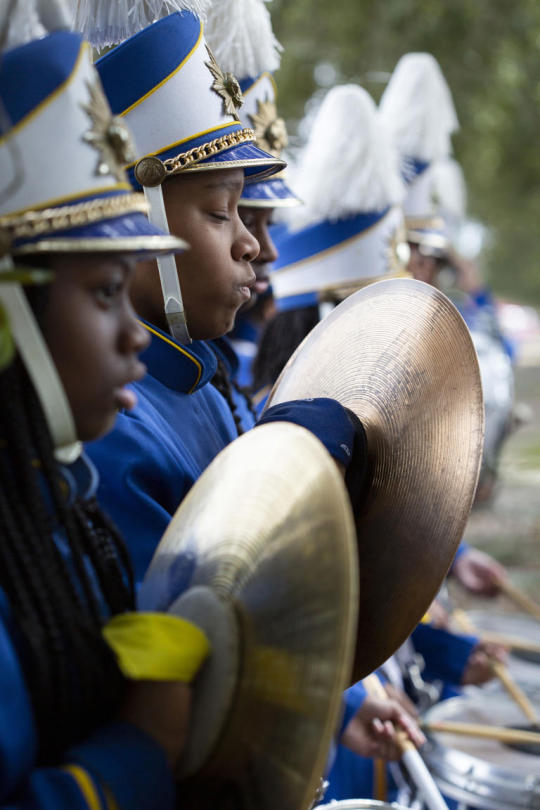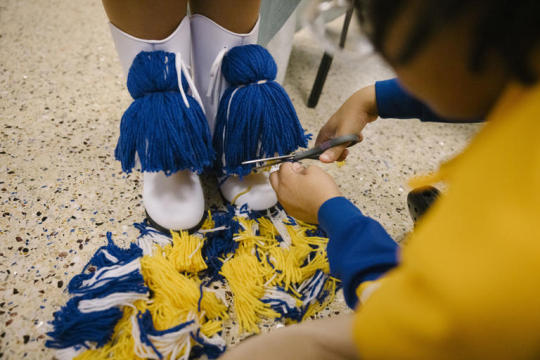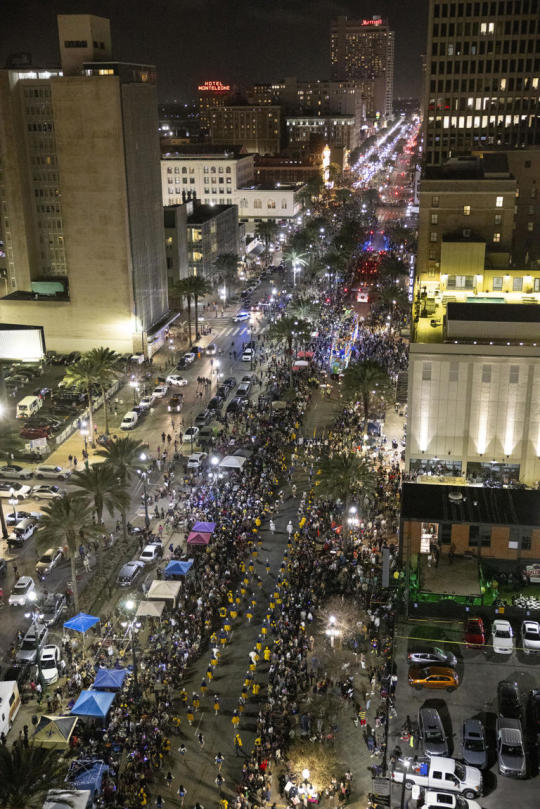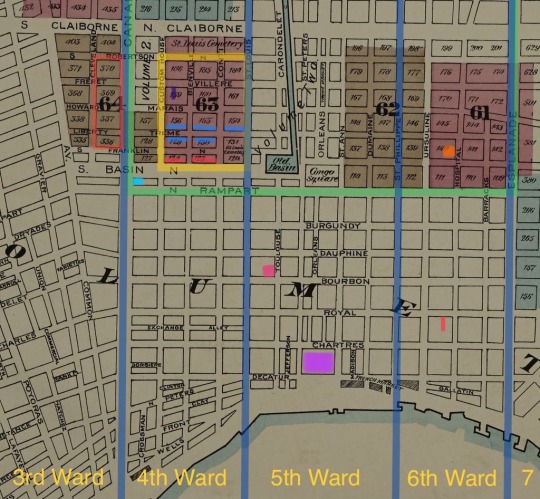#Henriette DeLille
Photo

Venerable Henriette DeLille
Servant of Slaves
1812-1862
Patronage: Racial justice
Henriette Delille was born, a "free woman of color" in New Orleans, Louisiana, in 1812. Her father was a white man of French descent. Henriette founded the Sisters of the Holy Family, a Black religious congregation, to care for the slaves, free people of color, elderly, infirmed and poor, catechizing and providing for their physical needs. She worked heroically to bring people to God through reform, peaceful direction, and missionary work until her death at 52. She is the first United States native-born African American whose cause for canonization has been opened by the Catholic Church.
Prints, plaques & holy cards are available for purchase here:{website}
68 notes
·
View notes
Text
Hoodoo Veneration Days in March 2023

The 2023 Hoodoo's Calendar recognizes these Hoodoo Saints & Elevated Ancestors on the following dates in the Month of March:
3/7 Morris Slater aka Railroad Bill (D-Day)
Offering Suggestions to Brother Slater: corn liquor, bread, & his Blue's song
3/10 Harriet Ross Tubman aka Black Moses (D-Day)
Offering Suggestions to Mama Harriet Tubman: milk, apples, & orange flowers
3/11 Venerable Henriette Delille (B-Day)
Offering Suggestions to Venerable Sister Henriette Delille: catholic bible, recite her prayer, & red wine
3/12 Virginia Hamilton (B-Day)
Offering Suggestions to Sister Virginia Hamilton: read/share her work, nightclub tunes from the 50s, & water libations
3/19 The Tuskegee Airman is Founded
Offering Suggestions to the Tuskegee Airmen: reflect on their service via movies/books dedicated to them, do a flyover in their honor (for pilots), & pour libations of water
3/20 Rosetta Tharpe (B-Day)
Offering Suggestions to Auntie Rosetta Tharpe: play/share her music (delta blues/jazz/gospel), a COGIC bible, & whiskey/gin
3/21 Son House (B-Day)
Offering Suggestions to Brother Son House: play/share his music (Mississippi delta blues), Baptist bible, & libations of water
3/24 Dorothy Height (B-Day) & John Mason Brewer (B-Day)
Offering Suggestions to Sister Dorothy Height: purple flowers, Baptist bible & libations of water
Offering Suggestions to Brother John Mason Brewer: read/share his work & libations of water
On the birthdays/death days of Elevated Ancestors and Hoodoo Saints, consider pouring libations or researching their stories as a way of venerating them. Lift them up in prayer. Share their story. Do for them what you would want the living collective of Hoodoos to do for you.
🌟 FINAL copies of The2023 Hoodoo's Calendar are available for purchase (once sold out, that's it)! Subscribe to the official e-newsletter for the latest updates & exclusive content access. https://thehoodoocalendar.square.site 🌟
#ancestor veneration#veneration#hoodoo#The Hoodoo Calendar#march 2023#hudu#ATR#atrs#john mason brewer#dorothy height#son house#rosetta tharpe#tuskegee airmen#virginia hamilton#Henriette Delille#harriet tubman#railroad bill#offerings
78 notes
·
View notes
Note
Here in extremely Catholic New Orleans, we specifically worship two holy figures: the Venerable Henriette Delille (the first U.S. native-born African American whose cause for canonization has been officially opened by the Catholic Church; born a free woman of color here), and Our Lady of Prompt Succor (a Roman Catholic title of the Blessed Virgin Mary enshrined here in New Orleans). I nominate them both for the appropriate categories!
NOLA, where you can get a psychic reading across from the church and then drown your sorrows in seafood and alcohol!
(Also remember Catholics don't worship saints or Mary, we just venerate/look up to them!)
BUT after those disclaimers I am happy to add both Ven Henriette and Our Lady of Prompt Succor to their respective lists!!!!
20 notes
·
View notes
Text
“I believe in God. I hope in God. I love. I want to live and die for God.”
- Mother Henriette Delille
80 notes
·
View notes
Text
Meet the ‘sisterhood’ making noise — and history — for Mardi Gras

At the edge of the square, members of the St. Mary’s Academy Cougar Marching Band stood stone-faced as they awaited the parade in tight formation. The band’s drum majors, Gilbrelle Stokes, 18, and Charland Thibodeaux, 17, stood at the ready, blue whistles in their mouths, as they prepared to direct the school’s 150-member marching unit, complete with a band, color guard, majorettes, flag team, dancers and cheerleaders.
Thibodeaux, a senior who has been marching with St. Mary’s since the third grade, was unfazed by the pressures of commanding such a large group.
“I always feel ready,” she said. “I been doing it so long.”
Marching band culture in New Orleans is ubiquitous, with groups performing at parades, weddings and funerals alike. Most locals can name their favorite high school bands, which are a highlight of Carnival season for all. School marching bands also serve as a training ground for the pipeline of talented professional musicians who steadily emerge from this birthplace of jazz.

“Band is a culture here unlike any other place,” said Pamela Rogers, 66, St. Mary’s president and acting principal. Sharp. Witty. Thoughtful. Sign up for the Style Memo newsletter.
“Bands define schools,” she continued. “And everyone knows we’re the girls with the skirts.”

St. Mary’s Academy’s skirt-wearing band first formed in 1937, making it the oldest Black girls band marching in the city. Today, it is one of just a handful of all-girl bands to regularly appear in Mardi Gras parades.

The school opened its doors in the French Quarter in 1867 and is still run by the Sisters of the Holy Family, a Black Catholic order founded by Henriette DeLille in 1842. DeLille, a multiracial nun (and current candidate for sainthood), believed in providing education for girls of color even when doing so was illegal. St. Mary’s was the first secondary school for Black girls in New Orleans.
This year, the St. Mary’s band will don new skirts for the first time since 2005, when its blue and gold uniforms had to be replaced after Hurricane Katrina’s floodwaters destroyed the school. The new skirts are a touch shorter than those they are replacing — a move staff hoped might increase student interest in the band. They’re still quite long though, even by Catholic school standards.
This Mardi Gras season also marks the first time Raynice Crayton, 27, will be at the band’s helm. A St. Mary’s alumna who joined the band as a seventh-grader, Crayton has already more than doubled band membership during her short tenure as director.
The group’s 52 players have varying levels of experience, from novices to passionate musicians, and they range in grades from fourth to 12th. In New Orleans East, where the school’s campus has been located since the 1960s, Crayton spends hours teaching girls the 10 tunes they will perform this Carnival, ranging from traditional music to a Janet Jackson song to the group’s favorite this year: “Talking in Your Sleep” by the Romantics.
“A lot of people don’t understand this, but band is a sport,” Crayton said.

The group’s schedule is packed tight, with the band performing in eight parades this Carnival season over the course of just two weeks, in addition to their regular school obligations and band practices. Parades last hours and typically happen rain or shine. The girls must traverse tightly packed 3.5-mile routes, all while carrying heavy instruments, entertaining rowdy crowds and dodging beads, puddles and occasionally horse manure.

The Cougars carry fiberglass sousaphones, which are lighter than the traditional brass, and use smaller-size bass drums. Gayland Thibodeaux, 53, a nurse, St. Mary’s alumna and mother to the band’s drum major, provides medical support to students along the parade route. She carries the requisite wraps, bandages and medications, plus some extra “girl stuff” in case of emergency.

High school bands have been a part of Mardi Gras festivities since the 1930s, though predominantly Black bands like St. Mary’s were not welcomed into some well-known parades until the 1960s. This weekend, the girls marched in Endymion, one of Mardi Gras’ largest and most well-attended parades, a decades-long tradition.
Ra-Saiya Lovick, a 13-year-old seventh-grader who is new to St. Mary’s, said this will be her first time marching in Carnival parades, a lifelong dream. Lovick, a cymbal player, is thrilled to share the experience with her all-girls band.
“It’s so cool, because you don’t see no boys around. It’s no boys drama,” she said. “It’s like a sisterhood.”

n a city famous for its music, few local institutions have nurtured young Black female musicians quite like St. Mary’s.
The Original Pinettes Brass Band, founded in 1991, originated at the school and today plays regularly across New Orleans and beyond. Still, the band’s tagline – “the only female brass band in the universe” — is indicative of just how far there is to go.

Two years ago, Troy Sawyer, 44, an award-winning trumpet player and music educator who grew up marching with the all-boys St. Augustine band, founded Girls Play Trumpets Too in response to the gap he saw between how girls and boys fared in the New Orleans music scene.
“For a long time, I felt like girls and women could not play the trumpet on the professional level, because I didn’t see any doing it,” he said.
Sawyer’s organization aims to teach girls about overlooked female musicians in history while also fostering their musical skills.
In New Orleans, such skills can be more than a hobby: Crayton, the St. Mary’s band director, received a full-ride college scholarship for her tuba playing.

“When I joined the band, it was always, ‘Boys play tuba, boys play drums,’” she said. “So those were the first instruments that I went to, because you already counted me out.”
Back on the parade route, Rae’Lynn Walker, a 13-year-old eighth-grader, was excited to play her weathered sousaphone for the thousands of onlookers awaiting the bands. The instrument – now held together with a bit of tape – is the same sousaphone Crayton played when she was a student.
“We’re making history,” Walker said with a smile. “And the crowds notice.”

On St. Charles Avenue, Marie Bookman, 60, shouted, “Girl power!” as the Cougars marched by her. Bookman, a former magistrate court commissioner, said she loves seeing an all-girl band.
“It gives them the opportunity to reach higher goals,” she said. “They can compete with the men, and not just cheer for them.”
Crayton hopes the band will continue to serve that purpose for many decades to come.
“We are not here to see the parade,” she reminded her girls before Sunday’s long march. “We are here to be the parade.”

#Meet the ‘sisterhood’ making noise — and history — for Mardi Gras#https://www.msn.com/en-us/news/us/meet-the-sisterhood-making-noise-and-history-for-mardi-gras/ar-BB1ib5Kx#Black Musicians Matter#Black History Matters#Black Women Matter#New Orleans#louisiana#Mardi Gras
13 notes
·
View notes
Text
Map of some important locations in AMC IWTV (no spoilers)

Orientation
Lakeside (towards Lake Pontchartrain) is towards the top of the map; riverside (towards the Mississippi River) is towards the bottom of the map. Upriver (“above”) is to the left; downriver (“below”) is to the right. North is in the top right.
Locations
Vieux Carré / French Quarter: Historic centre of New Orleans. Limits at Rampart, Canal, the river, Esplanade. Unmarked.
1132 Royal Street: The Gallier House, an eclectic 1857 townhouse (now a museum operated by Tulane University) that Lestat, Louis, and Claudia live in. Marked in red.
Jackson Square: The park by St Louis Cathedral where Louis and the gang like to sit on that one bench. Marked in lavender.
French Opera House: Foremost opera house in NO until it burned down in 1919. Uptown lakeside corner of Toulouse and Bourbon. Marked in magenta.
Fauborg Tremé: Prominent then-middle-class integrated neighbourhood lakeside of the Vieux Carré (French Quarter). From the 1840s on it was mostly populated by free, mixed-race Creoles. Limits at Canal, Rampart, and Esplanade; continues north above the map. Outlined in green.
St Augustine Church: The first Catholic church in the US built to serve a predominantly POC (though ultimately integrated) congregation, founded for the free Creole population of Tremé in 1842. (Fun fact: the fairly wealthy free mixed-race population got together and bought pews on either side of the aisles for Catholic slaves to sit in.) Uptown lakeside corner of St Claude (now Henriette Delille) and Hospital (now Governor Nicholls). Marked in orange.
De Pointe du Lac family home: Probably near the church, riverside of Marais. The house itself is the Derbès mansion, which is a fair bit further north, but Louis says they live about half a mile away from him and Lestat, which places them around the 3rd precinct of the 6th Ward. (Fun fact: this is also where Homer Plessy lived in the 1890s). Unmarked.
St Louis Cemetery: Where the de Pointe du Lac family tomb is. The family has been in the city long enough that they’re probably buried in the old cemetery on Basin and St Louis. (My headcanon is that the Louis of the books, born in the 1760s, is AMC Louis’ great-great-grandfather, probably by Yvette, in a different timeline where Lestat futzes about in Europe for 150 years longer.) Unmarked, but labelled.
Saenger Theatre: Popular cinema and stage theatre built in 1927 (it’s also where the opera scenes in episode 2 were filmed, though they were set at the French Opera House). Downtown lakeside corner of Rampart and Canal. Marked in cyan.
Storyville: NO’s red-light district from 1897 to 1917. Limits at Robertson, Customhouse (now Iberville), Basin, St Louis. Outlined in a yellow box.
Frontages on Liberty Street: Where most of Louis’s Storyville businesses are. Marked in blue.
Frontages on Basin Street: Where the most profitable Storyville businesses are. (The most profitable block is labelled 124 here. Thomas Anderson owned the saloon on the corner of Basin and Customhouse; Lulu White, a mixed-race madam who should have been in the show, owned the brothel on the corner of Basin and Bienville.) Marked in red.
Azalea Hall: 202 Villere Street (if I’m not mistaken). Approximate location marked in violet.
Black Storyville: Segregated Colored red-light district that would have been created by Ordinance 4118 in March 1917. Limits at Robertson, Cleveland, Liberty, Canal. Outlined in a red box.
Ward boundaries: They don’t come up in the show, but they’re a fairly important part of NO culturally and geographically, so I’ve included them.
3rd Ward: Predominantly Anglo and White. Now the central business district. Upriver of Canal Street.
4th Ward: Upper part of French Quarter. Limits at Canal and St Louis.
5th Ward: Central part of French Quarter. Limits at St Louis and St Philippe.
6th Ward: Lower part of French Quarter. Limits at St Philippe and Esplanade.
7th Ward: Predominantly Anglo and Black. Downriver of Esplanade.
If anyone is interested to know where anything else is (or might be) or has any corrections, please let me know!
If you need floor plans or anything for Louis and Lestat’s townhouse, the Gallier house is extensively documented. I’ve included the floor plans below (the approximate location of the incinerator is marked in red; toilets are on the other side of that gate in the privy), but much more can be found here.



#i speak#amc iwtv#iwtv#if you happen to be writing a fic where lestat goes into politics#like i may or may not be doing#1st precinct of 6th Ward is riverside of Bourbon#2nd precinct is riverside of Rampart#3rd precinct is riverside of Marais#4th precinct is riverside of Claiborne
44 notes
·
View notes
Photo





Bourbon Street, 7:30pm
The street is just warming up. Drinkers fortify themselves with pizza and chips, fortunes are told on the side streets under the glow of gas lamps, bucket drummers and dance crews entertain the crowds, and even chess masters get a cut of the action.
The last photo is of Place de Henriette Delille- the back of the St Louis Cathedral. They were filming Bryan Cranston’s Showtime series, “Your Honor” on Royal Street tonight.
0 notes
Text
'In Our Mothers' Gardens'
#In Our Mothers' Gardens#Black women#Koko Zauditu-Selassie#Louisiana#Louisiana culture#Black American culture#Louisiana Creole#Henriette DeLille#Marie Laveau#Hoodoo#Voodoo#Vodou#New Orleans
59 notes
·
View notes
Photo


Mapping The World With §ound§ in Marquette-en-Ostrevent (Nord)
cloche la plus aigüe - volée et tintement automatisés.
« Je m’appelle Juliette Marie Henriette. J’ai pour parrain Monsieur Napoléon Lempereur Cachera et pour marraine Mademoiselle Juliette Cachera. Je remplace Marie Joseph détruite par les allemands en 1917. J’ai été baptisée en l’an de grâce1924 sous l’administration de monsieur l’abbé Delattre curé. De Monsieur Jean Baptiste Canonne maire de Monsieur Émile Lucas adjoint au maire. De messieurs Cachera Joseph, Poulain François, Poulain Joseph, Delille, Charles, Delforge Alexandre, Cachera André, Deloge Charles, Dufour Joseph, Lefrere Morand Cachera Théophile, Poulain Aristide, conseillers municipaux »
Fonderie WAUTHY – Douai
Remerciements : Monsieur Rolain
1 note
·
View note
Photo


that order was founded by Henriette DeLille

259 notes
·
View notes
Photo

Today Catholics celebrate #AshWednesday (the start of Lent), so we have a special edition of #WomanCrushWednesday: the Venerable Henriette Delille! Ms. Delille was a native New Orleanian who founded the Roman Catholic order of nuns called Sisters of the Holy Family. Composed of free women of color, the order provided nursing care and a home for orphans, later establishing schools as well. They taught enslaved children when such education was prohibited by law. Henriette Delille lead a life of service, especially to slaves and the poor in New Orleans. She is the first US native-born African American person on the path to sainthood. For a fascinating history of the role of Black Catholic nuns in the Black freedom struggle check out @blackwomenradical's interview with Dr. Shannen Williams at the link in our bio! ⠀⠀⠀⠀⠀⠀⠀⠀⠀ #BlackHistoryMonth #BlackWomensHistory #WomensHistory #WomenInHistory #wcw #catholic #romancatholichistory #neworleanshistory #henriettedelille #drshannenwilliams #blacknuns https://www.instagram.com/p/B9DW483FQUK/?igshid=tv7qdedaex36
#ashwednesday#womancrushwednesday#blackhistorymonth#blackwomenshistory#womenshistory#womeninhistory#wcw#catholic#romancatholichistory#neworleanshistory#henriettedelille#drshannenwilliams#blacknuns
4 notes
·
View notes
Text

Venerable Henriette DeLille
Servant of Slaves
1812-1862
Patronage: Racial justice
Henriette Delille was born, a "free woman of color" in New Orleans, Louisiana, in 1812. Her father was a white man of French descent. Henriette founded the Sisters of the Holy Family, a Black religious congregation, to care for the slaves, free people of color, elderly, infirmed and poor, catechizing and providing for their physical needs. She worked heroically to bring people to God through reform, peaceful direction, and missionary work until her death at 52. She is the first United States native-born African American whose cause for canonization has been opened by the Catholic Church.
Prints, plaques & holy cards available for purchase here: (website)
57 notes
·
View notes
Text
Today we venerate Elevated Ancestor Venerable Henriette Delille on her 210th birthday. 🎉

Through her life's work in serving the poor & ministry in her founding of the Sisters of the Holy Family, Venerable Sister Henriette Delille has cemented herself in Black Catholic History in America.
Born a "Free" Woman of Color as a Louisiana Creole with West Afrikan ancestry, to a large mixed family of Creole, Spanish, & French descent. She was a product of the placage system to an unmarried 2nd generation Creole (descended from a West Afrikan Grandmother) & a Spanish sire. While the women in her family were groomed to form serial relationships with wealthy White men, Sister Delille resisted this placage lifestyle in favor of Catholic religious teachings. As a young girl, she became involved in catechism - serving as witness to many marriages among the enslaved & Godmother to their children. She bore 2 sons as a teenager who both died by the age of 3. At 24, she professed her faith & love in Christianity. She'd go on to establish the written template for a devote Christian woman archetype, founding the Society of the Holy Family in 1846 followed by the Association of the Holy Family in 1847, the 1st order of Afrikan descent nuns, who's mission it was to serve the poor, tend to the sick, & educate the ignorant; and committed to many sacrifices in doing so.
Sister Delille faced insurmountable odds in opposition to her service at such a racially violent & socially divided era in U.S. History. Her family abhorred her involvement with slaves for fear that she'd expose their Afrikan roots. The public & the Church largely refuted the involvement of Black Women in Christian service. She overcome it all with humble grace, leadership, & faith. She formed her own order, which had not yet been given formal recognition by the Holy See & took their Confirmation vows in private.
"For the love of Jesus Christ, she made herself the humble servant of slaves.” - the last word in Venerable Henriette Delille's obituary.
Sister Delille rests in Louis No.2 Cemetery in New Orleans, LA. and is currently under canonization. In '88, she was declared a Servant of God. In 2010, she was declared Venerable. Hers is the first case of its kind to be officially open by the Vatican. If the canonization process continues, she'd be the first Afrikan descendant born in the U.S. to achieve Sainthood. Though there is some controversy surrounding her using owned/freed 1 enslaved Woman named, Betsy (the circumstances surrounding this are a mystery) & her being Creole Octoroon, thus questioning her "Blackness" as she self-identified as "Non-White".
We pour libations & give Venerable Henriette Delille her 💐 for her fierce perseverance & commitment to the selfless service. Her patronage is that of racial, gender, healthcare, education, & social equality.
Offering suggestions: a Catholic Bible (in the French tradition), recite her prayers, & red wine.
🌟 FINAL copies of The2023 Hoodoo's Calendar are available for purchase (once sold out, that's it)! Subscribe to the official e-newsletter for the latest updates & exclusive content access. https://thehoodoocalendar.square.site 🌟
#the hoodoo calendar#ancestor veneration#Venerable#Henriette Delille#black catholics#new Orleans#black Saints
15 notes
·
View notes
Photo

Stained glass windows in St Louis Cathedral depicting Henriette Delille. . Delille established the Roman Catholic order of the Sisters of the Holy Family, which provided nursing care, homes for orphans, and established schools. (at St. Louis Cathedral - Cathedral-Basilica of St. Louis King of France) https://www.instagram.com/p/B8bveE8FMPG/?igshid=17nillo76b59p
#new orleans#NewOrleans#only in new orleans#New Orleans LA#new orleans louisiana#st louis cathedral#french quarter#frenchquarter#french quarter new orleans#nola#NOLA love#gonola#louisiana#St. Louis Cathedral#church#historic church#nola church#catholic church#cathedral#stlouiscathedral
1 note
·
View note
Text
“I believe in God.
I hope in God.
I love.
I want to live and die
for God.”
- Mother Henriette Delille
20 notes
·
View notes
Photo

Title: The Courage to Love
https://en.wikipedia.org/wiki/The_Courage_to_Love
Summary: Henriette Delille, a free woman of color, was born in 1813 into one of New Orleans' most prominent families. Her family assumed she would follow her mother and sister's path and become a mistress for a wealthy white man. However, Henriette had different plans for her life.
0 notes